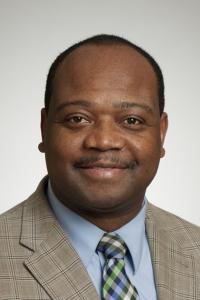A Decade of Global Health Efforts in Haiti Shows Results for Radiology
Dr. Ernst Garçon’s Mission to Improve Diagnostic Care in his Homeland
When a delegation from the American College of Radiology (ACR) Foundation flew to Haiti following the earthquake in 2010, they quickly discovered that radiological needs for that country were much bigger than the disaster relief they initially planned to provide.
At the time, there were only 19 radiologists serving a population of 10 million. There was no radiology residency program in place to train future radiologists, and the country lacked the basic equipment physicians need to make an accurate diagnosis.
“Someone can have a stroke, but if you don’t have a CT scanner, there’s no way to diagnose what kind of stroke it is,” explains Ernst Garçon, MD, assistant professor of radiology at Columbia University Irving Medical Center, describing conditions in areas of Haiti that lack basic radiology resources. “Physicians might think it’s an embolic stroke and give the patient some aspirin. But that decision might kill the patient if it was actually a hemorrhagic infarct.”
The ACR Foundation group went back many times over the next five years to provide support and education for several hospitals in the Port au Prince area, often bringing Dr. Garçon with them. Born and trained in Haiti, he had both the medical training and the cultural background that was critical to navigating unfamiliar hospital systems and ensuring that help was going where it was actually needed.
“Dr. Garcon was integral to the success of the program from the start. He not only brought expertise in teaching, but his knowledge of the culture, language, and health system in Haiti was invaluable,” recalls Brad Short, vice president of governance and member services at ACR, who helped administer the ACR Foundation trips. "Mostly though his passion he inspired the faculty and the newly trained residents at the University Hospital."
Dr. Garçon had his own motivations to help the country that set him on the path to becoming neuroradiologist at Columbia.
“I come from a less fortunate background, and a lot of people contributed to where I am now,” he says, explaining that it was his godfather, an orthopedist, who inspired him to pursue medicine.
"You have to bring back the elevator so that somebody else can use it."
Ten years later, Dr. Garçon is still working tirelessly for better radiology in Haiti. And while the needs are still great, he can now see concrete results of the work he has done in partnership with the ACR Foundation and many other organizations including Partners in Health, RAD-AID, Radiological Society of North America (RSNA), Columbia University, and more.
A radiology residency that Dr. Garçon helped develop at the Hôpital de l'Universite d'Etat d'Haiti in Port au Prince in 2012 now graduates radiologists every year, many of whom stay in the country to provide diagnostic care for Haitian citizens. Dr. Garçon is considered faculty and has lectured on many occasions.
When a CT scanner was donated to the Hôpital Universitaire de Mirebalais by Partners in Health in 2015, there was initially no one qualified to read the scans in that remote location. With the help of department leadership, Dr. Garçon organized his colleagues, and all radiologists in the Department of Radiology became credentialed to read them.
He has brought Haitian residents to New York for observerships, helping them along in their careers, and he has inspired his own colleagues and residents from Columbia to accompany him to Haiti multiple times to provide radiology education for the physicians and residents in Port au Prince.
“Part of our mission at Columbia and NewYork-Presbyterian is community outreach. We are concerned not only about our local community but also the world community," says Dr. Joshua Weintraub, professor of radiology and executive vice chair of operations and administrative affairs. "Dr. Garçon’s efforts in Haiti are integral to our department's global health efforts.”
Dr. Garçon’s most recent project involves the establishment of a radiologic technologist program at the Universite d'Etat d'Haiti. Working with the American Society of Radiologic Technologists (ASRT) and the ACR, as well as the Wesner Biassou, MD Charitable Fund, he has been integrally involved in both the funding and the curriculum development for the program and has helped promote it to the university leadership.
“Technologists in Haiti currently train by observing their friends,” Dr. Garçon says. “They watch, they take notes in their notebooks, and then they jump in.”
The new program curriculum covers human anatomy as well as physics and chemistry. It will also offer a bioengineering track which will provide training for technologists who want to work with manufacturers on equipment repair and development. “You need to understand the equipment, so when there’s an issue with the image, you can fix it," Dr. Garcon says, explaining that without this kind of technical expertise on site, an equipment donation becomes useless as soon as it needs a repair.
The program has been in development since 2014 and is anticipated to open with 20 trainees in the fall of 2021. It will be the first radiologic technologist school in Haiti.
Looking ahead, Dr. Garçon sees endless opportunities to give back to the country that set him on his path to a career at Columbia. “If I can help someone get to the next level, that’s my dream come true.”


